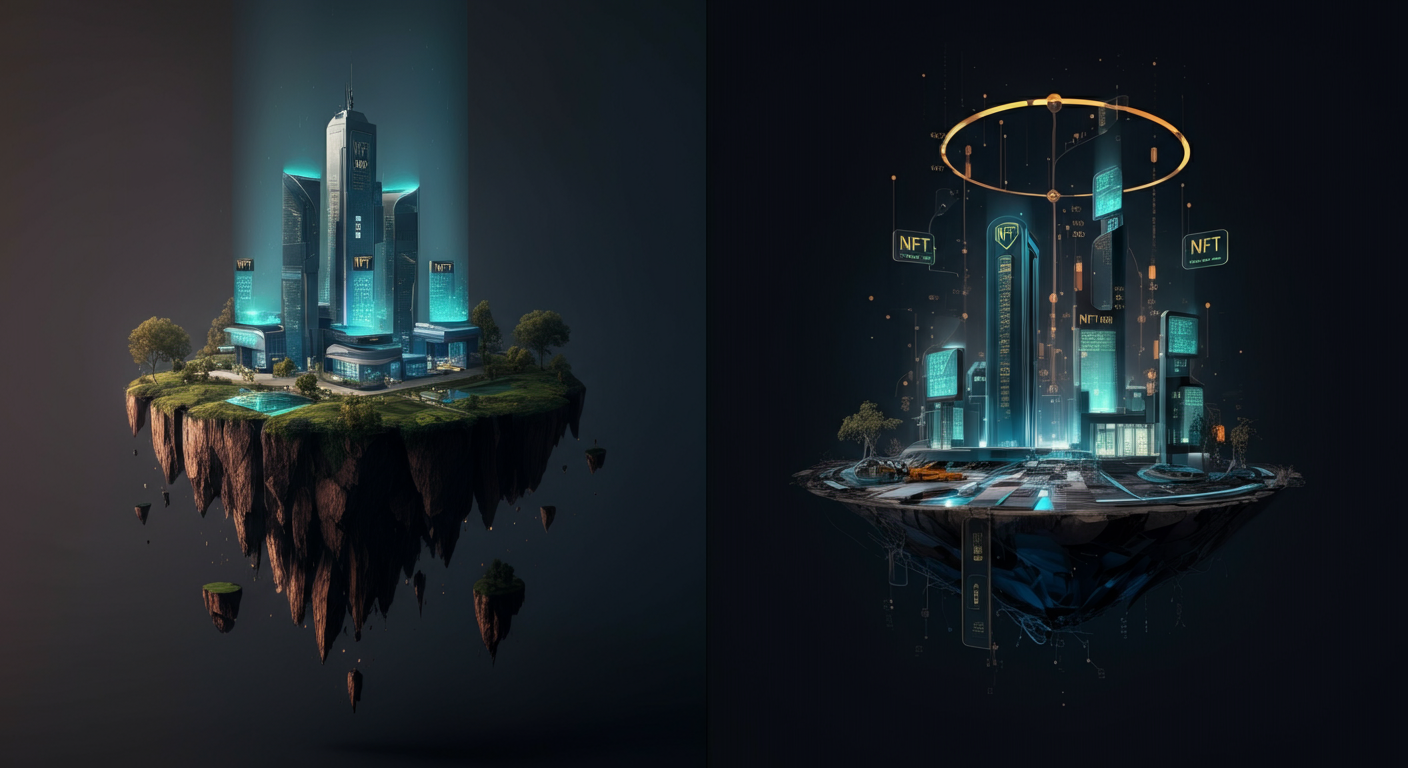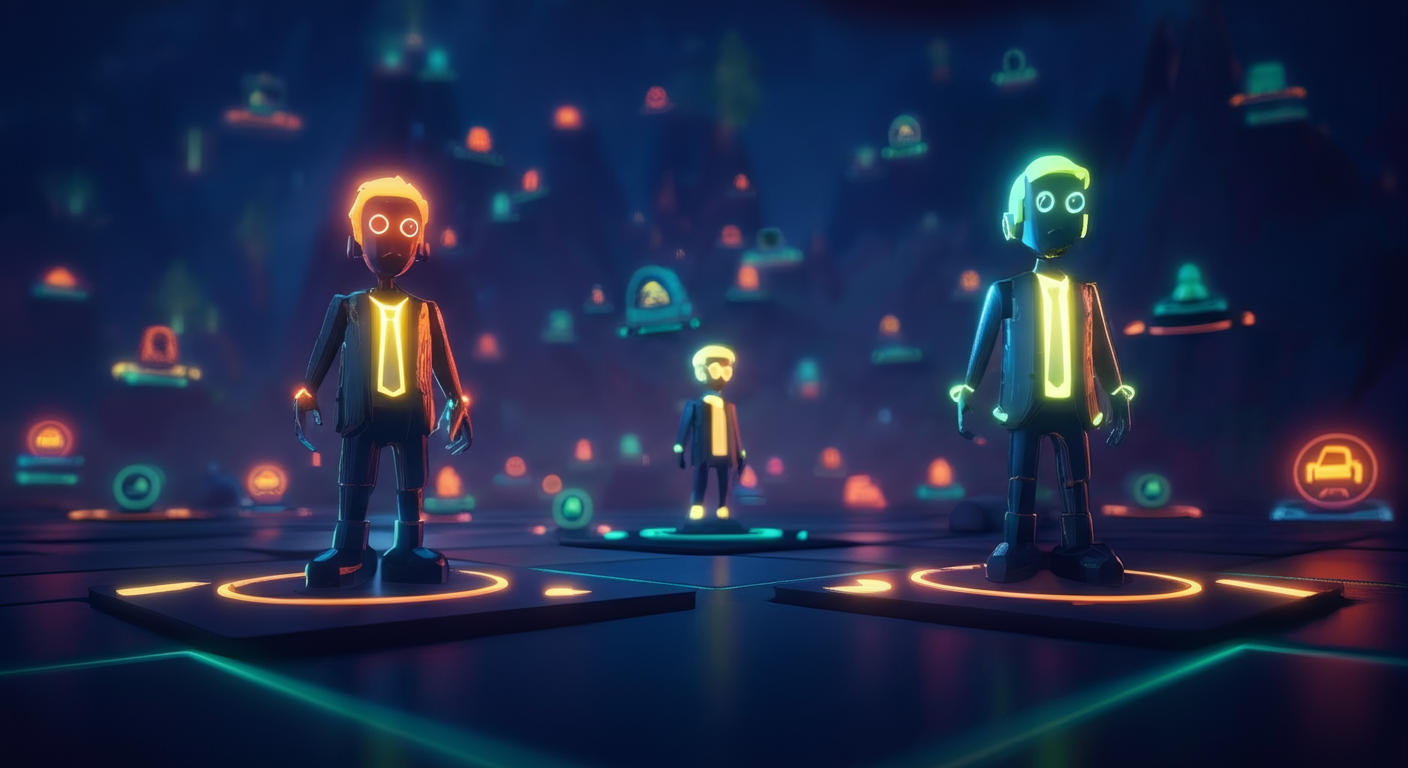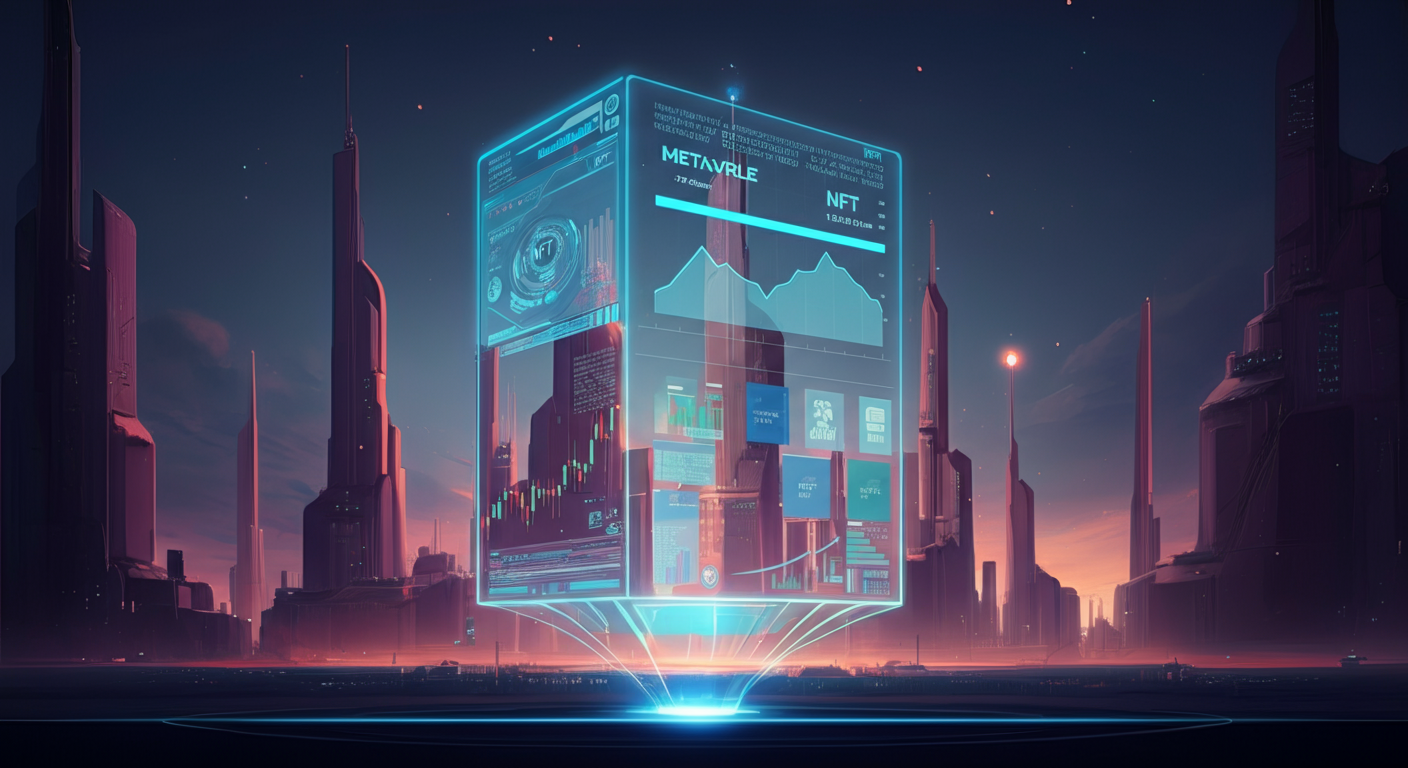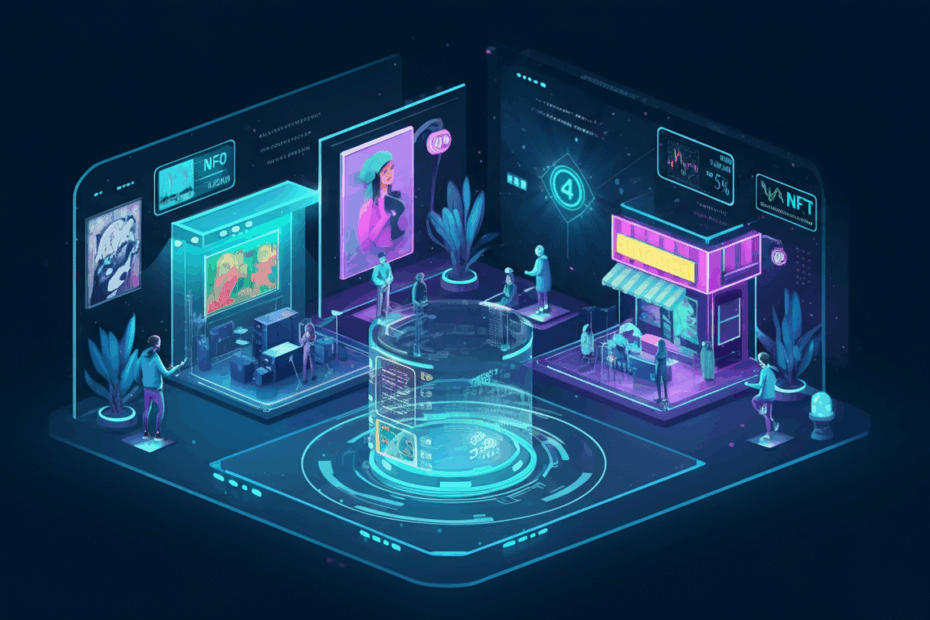Own the Metaverse! 🏡 Discover how #NFTs are revolutionizing virtual real estate. Learn the basics, risks, and potential!#MetaverseNFT #VirtualLand #Web3
🎧 Listen to the Audio
If you’re short on time, check out the key points in this audio version.
📝 Read the Full Text
If you prefer to read at your own pace, here’s the full explanation below.
Basic Info
John: Let’s start by breaking down what metaverse land NFTs are. Essentially, these are digital assets representing virtual real estate in online worlds like Decentraland or The Sandbox. They’re non-fungible tokens, or NFTs, which means each one is unique and can’t be swapped one-for-one like cryptocurrencies. According to Cointelegraph reports from 2021, these started gaining traction when platforms like Decentraland allowed users to buy, sell, and develop virtual plots.
Lila: That makes sense for beginners. So, when did this really take off? From what I’ve seen in historical data, it began around 2017 with projects like CryptoVoxels, but the big boom happened in 2021. CoinDesk articles mention how Facebook’s rebrand to Meta in late 2021 sparked massive interest, leading to trading volumes skyrocketing. Why does this exist? It’s about creating scarcity in digital spaces— just like real land is limited, virtual land is too, which drives value.
John: Exactly, Lila. The aim is to solve issues in traditional gaming and social platforms where users don’t truly own assets. Metaverse land NFTs give ownership via blockchain, so you can build, monetize, or trade without central control. Early milestones include Decentraland’s launch in 2020, where users started hosting events. User reactions back then were mixed— excitement from early adopters, but skepticism about bubbles, as seen in 2021 forums.
Lila: I recall from Cointelegraph that in late 2021, over $100 million in virtual land was sold in just one week across projects like The Sandbox and Decentraland. It aimed to empower creators by letting them own and profit from virtual spaces. Past user reactions highlighted hype, with some calling it the future of real estate, while others warned of volatility.
John: True, and that volatility is key. These NFTs exist to bridge physical and digital economies, solving centralization in tech by using decentralized ledgers. An early milestone was Somnium Space’s VR integration in 2019, allowing immersive ownership. Reactions from users in 2021 often praised the innovation but noted high entry costs as a barrier.
Lila: Overall, it’s about democratizing virtual worlds. Started as niche experiments, now it’s a trend solving ownership gaps in digital life.
Technology Pillars & Architecture

John: Diving into the tech, metaverse land NFTs rely on blockchain basics. They’re minted as ERC-721 tokens on Ethereum, using smart contracts to handle ownership. Think of smart contracts as self-executing agreements— like a vending machine that dispenses land rights when you pay. In the past, this was all on Ethereum’s mainnet, causing high gas fees during 2021 peaks.
Lila: For beginners, analogies help. It’s like owning a plot in a video game, but blockchain ensures it’s yours forever, not revocable by the company. Currently, many use Layer 2 solutions like Polygon for faster, cheaper trades, reducing those fees. Looking ahead, integrations with zero-knowledge proofs could enhance privacy.
John: Architecture-wise, the pillars are decentralization, interoperability, and immutability. Decentraland uses MANA tokens for transactions, with land NFTs stored on-chain. In the past, without L2, scalability was a bottleneck— remember the 2021 congestions? Currently, projects integrate with metaverse platforms for VR rendering.
Lila: Plain-English definition: NFTs are unique digital deeds. How it works— you connect a wallet like MetaMask, buy via marketplaces like OpenSea. Smart contracts verify trades automatically. In the past, this was Ethereum-only; currently, cross-chain bridges allow movement to Solana; looking ahead, full multichain support is expected.
John: Another pillar is oracles for real-world data, like pricing feeds. Analogous to a referee in sports, ensuring fair play. Past tech was basic minting; currently, advanced like in The Sandbox with voxel editing; future might include AI-driven dynamic lands.
Lila: Security comes from blockchain’s ledger— every trade is recorded publicly. For architecture, it’s layered: base blockchain, NFT standard, metaverse app. Past limitations were speed; current fixes use rollups; ahead, quantum-resistant tech could emerge.
John: Integration with metaverse means avatars can interact on your land. Simple analogy: like building a house in Minecraft, but sellable for real money. Evolution: past hype-driven, current utility-focused, future ecosystem-wide.
Lila: Wrapping up, the tech pillars ensure trustless ownership, evolving from clunky starts to seamless experiences.
Community & Ecosystem
John: The community around metaverse land NFTs is vibrant, with developers building tools and users trading actively. Governance often uses DAOs, like Decentraland’s, where landowners vote on updates. User growth surged in 2021 but stabilized; partnerships with brands like Adidas in The Sandbox boost ecosystems.
Lila: Social media sentiment is positive but cautious. From posts on X, there’s excitement about trading mechanisms. For example, a verified post from a gaming account highlighted how Quick Trades simplifies NFT swaps in metaverse games, powered by Mythos chain, emphasizing efficiency for players.
John: Developer activity is high on GitHub for projects like OpenSea integrations. Sentiment on X shows optimism; another post from a blockchain expert discussed how Seaport protocol allows flexible NFT trades, like swapping for ETH or other tokens, increasing liquidity in metaverse land deals.
Lila: Ecosystems include events and virtual economies. Growth metrics from CoinGecko show price drops post-2022, but community remains engaged. Partnerships with VR firms expand reach.
John: Overall, it’s a collaborative space with strong governance models driving adoption.
Lila: Yes, and sentiment reflects real utility over hype.
Use-Cases & Integrations

John: Use-cases for metaverse land NFTs include virtual events, like concerts in Decentraland. NFTs act as property deeds, integrable with gaming for builds. Live apps like The Sandbox let users create games on their land.
Lila: Integrations extend to cross-chain, like bridging to Binance Smart Chain. In gaming, land hosts player economies. Actual examples: Otherdeeds in Yuga Labs’ metaverse for building ape-themed worlds.
John: Metaverse functions allow advertising or social hubs. NFT roles include staking for rewards in some platforms. Cross-chain usage via tools like Wormhole enables broader trading.
Lila: Products like Somnium Space offer VR immersion, where land integrates with real-time events. It’s about creating persistent digital spaces.
John: Another use-case is digital real estate flipping, with integrations to DeFi for loans against land NFTs.
Lila: Overall, these drive real-world value in virtual settings.
Future Vision & Expansion Potential

John: The vision is a fully interoperable metaverse where land NFTs form the backbone of digital economies. Roadmaps from projects like Decentraland promise AR integrations, expanding to mobile.
Lila: Community views it as high-potential but risky. Expansion could include global brand entries, with trajectories seen as upward if adoption grows.
John: Promised features include AI companions on lands. Community optimism is tempered by past crashes.
Lila: Looking ahead, it’s about seamless virtual lives.
John: Yes, with massive expansion if tech matures.
Risks & Limitations
John: Risks include price volatility— CoinGecko data shows 90% drops from 2022 peaks. Legal issues arise from unregulated markets, like potential securities classifications.
Lila: Scalability limits user experience during high traffic. Security concerns, like hacks on platforms, as noted in 2022 reports.
John: UX issues for beginners, with complex wallets. On X, analysts raise concerns about bubbles, echoing 2021 warnings.
Lila: Limitations include environmental impact from proof-of-work chains, though shifting to proof-of-stake helps.
John: Verified developers on X mention liquidity risks in illiquid markets.
Expert Commentary
John: Experts on X are buzzing. One thought leader paraphrased that metaverse land won’t be dominated by big brands but built by innovative projects, turning skins into token economies— real utility over flex.
Lila: Another from a blockchain account discussed auto-balancing in NFT markets, where arbitrage keeps prices in sync, benefiting traders and maintaining activity.
John: A third highlighted flexible trading protocols allowing NFT swaps for various assets, increasing metaverse liquidity.
Lila: These views show a maturing space. I reflect that it’s shifting from hype to sustainable models.
John: Agreed, experts emphasize real mechanisms over speculation.
Recent Trends & Roadmap
John: In the past, 2021 saw $100M+ weekly trades. Currently, prices are down 90% per CoinGecko, but integrations continue.
Lila: Looking ahead, roadmaps include L2 upgrades and VR enhancements.
John: Recent trends show renewed interest in efficient trading, as per X posts on price-locking features.
Lila: Past hype to current consolidation, future expansion via partnerships.
John: Updates like new metaverse features keep it evolving.
FAQ
What are metaverse land NFTs?
John: Metaverse land NFTs are unique digital assets representing virtual property in platforms like Decentraland. They’re based on blockchain for true ownership.
Lila: Beginners can think of them as deeds to online real estate, tradeable and developable.
How do prices work for these NFTs?
John: Prices are market-driven, influenced by location and demand. Past peaks reached millions, but current averages are lower due to corrections.
Lila: Factors include scarcity and utility, with tools like OpenSea showing real-time floors.
What’s the trading mechanism?
John: Trading happens on marketplaces via smart contracts, using crypto like ETH. Mechanisms include auctions and direct sales.
Lila: Advanced protocols allow swaps for tokens or other NFTs, enhancing flexibility.
How to onboard and start using them?
John: Set up a wallet like MetaMask, buy crypto, and connect to a marketplace. Start with small purchases.
Lila: Tutorials on official sites guide through minting or buying land.
What tools and wallets are needed?
John: Essential tools include browsers like Chrome with extensions, wallets supporting ERC-721.
Lila: Popular ones are MetaMask or WalletConnect for secure transactions.
What are the community aspects and risks?
John: Communities thrive on Discord and X, with DAOs for governance. Risks include volatility and scams.
Lila: Engage safely, DYOR, and watch for verified updates.
Related Links
- Official website
- Official X account
- Whitepaper
- GitHub or Docs
- CoinGecko or CMC listing
Final Reflections
John: Exploring メタバース上の土地NFTとは?価格や取引の仕組み through real-time insights gave me a deeper appreciation for how Web3 is evolving beyond hype. It’s building real infrastructure.
John: I’ll be watching how メタバース上の土地NFTとは?価格や取引の仕組み performs in developer adoption and how the tools it offers evolve with actual use.
Lila: I agree! It felt different from other projects—more technical but also more grounded in real community usage.
Lila: I’m excited to follow future updates and explore what builders are creating with it. Definitely one to watch!
Disclaimer: This article is for informational purposes only. Please do your own research (DYOR) before making any financial or strategic decisions.
